Portmeirion is one of the most bizarre, whimsical, and charming attractions in North Wales. Sitting next to the coast, the colourful village features Mediterranean-style architecture that seems to both complement and clash with the rugged surroundings. Although the village has several luxury accommodation options, it’s also open to day visitors who want to enjoy somewhere that’s a bit different on their travels around the UK.
History of Portmeirion Village
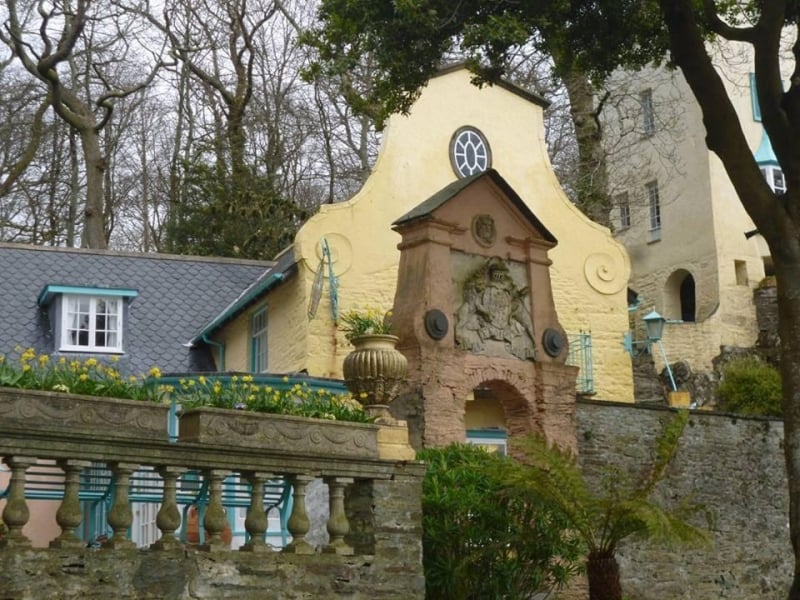
Sir Bertram Clough Williams-Ellis was a British architect with a bold vision. He dreamed of developing an area of natural beauty, in this case a peninsula in North Wales, and showing that buildings can enhance and complement the natural features rather than always detracting from the visual appeal. And so, developed as a tourist attraction and retreat, the unusual Portmeirion was born in the 1920s.
Portmeirion as a filming site
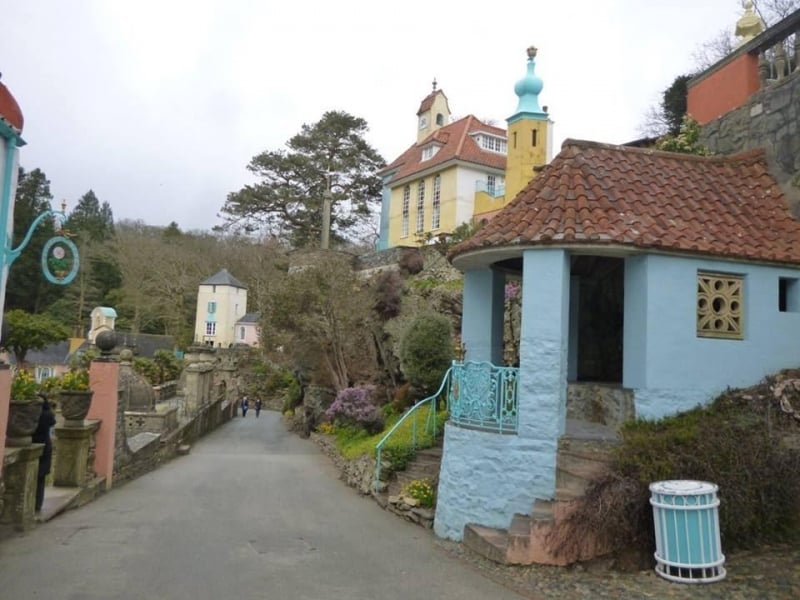
Portmeirion became famous in the 1960s thanks to being the filming site for a British TV series called The Prisoner. The show was as surreal as its setting, garnering a large fan base. Although many people from today’s younger generations know nothing of the show, older visitors may feel a somewhat chilling sense of déjà vu as they explore the grounds. Each year, a fan club called Six of One hold a convention at Portmeirion, re-enacting scenes from the show and expressing their love for the programme. At other times of the year, a small gift shop keeps The Prisoner’s legend alive.
Where did Portmeirion’s buildings come from?
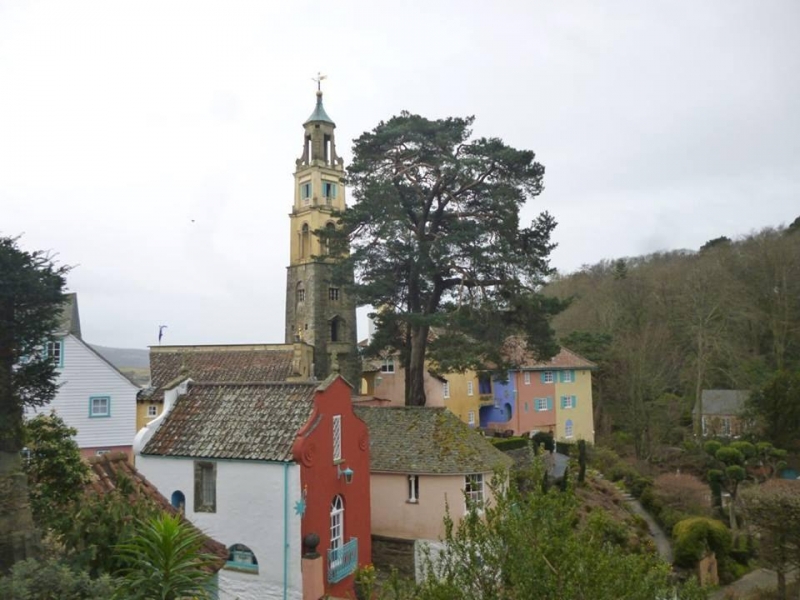
The many striking buildings around the village have eclectic roots. Some buildings were already present on the peninsula, still standing from when an earlier estate was developed on the land. Most of the original buildings had extra aesthetic features added as well as being painted in vibrant hues. Some of Portmeirion’s buildings were relocated here from other parts of the country, painstakingly taken to pieces, transported, and then rebuilt. Some buildings make use of parts of older buildings that were slated for demolition, with bits that were salvaged and given a new lease of life, and there are some structures that were completely new, built for purpose in the coastal village.
All buildings are unique
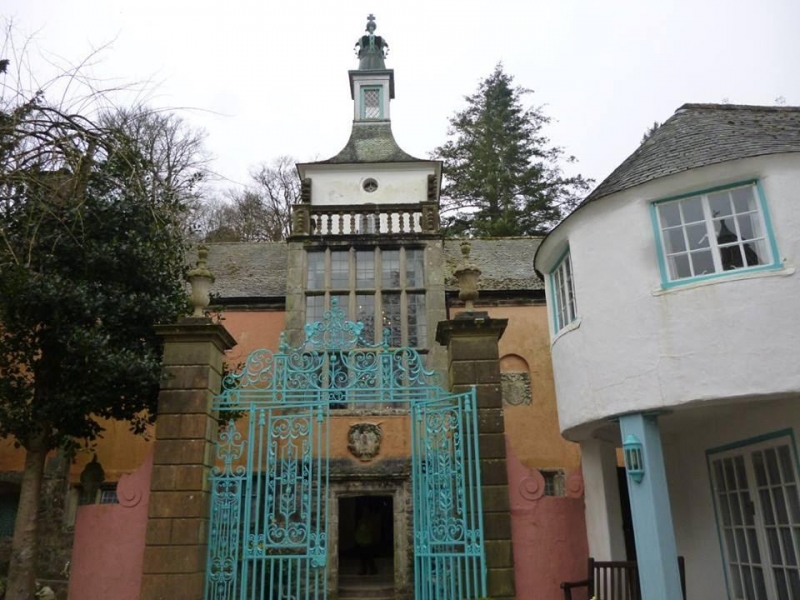
As you explore the enchanting village, you’ll quickly realise that no two buildings are the same. The ornamental features, range of styles, and attractive colours make for a photographer’s dream! The village is small enough to explore comfortably by foot, but the diversity of the architecture transports you to a magical realm that feels much larger than it actually is. Buildings come in all shapes and sizes, and variations in things like windows, turrets, domes, balconies, towers, porches, patios, courtyards, and archways add to the beautiful appearance. You’ll also discover that the village’s structures come from different eras, with Jacobean, Gothic, Romanesque, Baroque, and Regency styles all sitting side by side.
Major structures in the village
The Town Hall building features an ornamental ceiling that was relocated here from a much older building in another part of the country. The building also has a fancy restaurant and several accommodation suites.
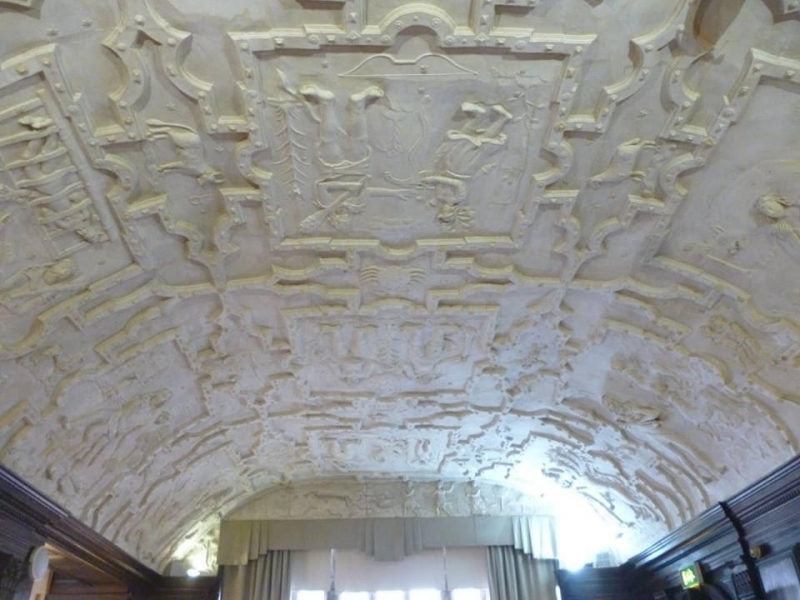
A lighthouse sits next to the choppy water and the tower of an old church looms proudly over the surrounding buildings. Peek inside a small grotto-like tiled temple and you’ll find a golden Buddha statue.
The old Toll House looks over the beach and cannons sit in the high walls. Telford’s Tower, in the Central Piazza, was built to commemorate the bi-centenary of the construction of Telford’s Menai Bridge, a vital piece of engineering that linked mainland North Wales with the isle of Anglesey. The Central Piazza also boasts a gorgeous Gothic pavilion and the Gloriette.
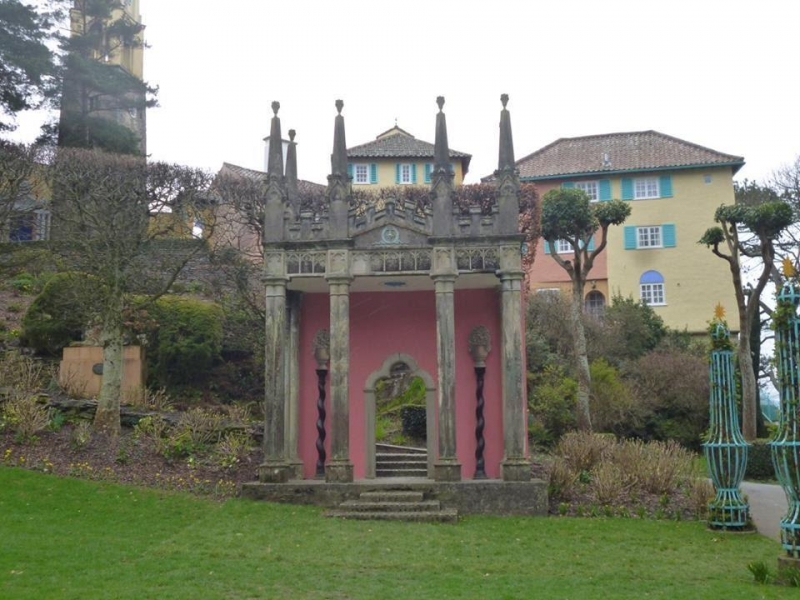
The grand and elegant Hotel Portmeirion sits next to the beach. A stone boat sits on the store, a reconstruction of an ill-fated boat, Amis Reunis, that was once moored here but was wrecked in a storm. The salvaged masts from the original Amis Reunis were used to decorate the hotel’s restaurant.
Statues around Portmeirion
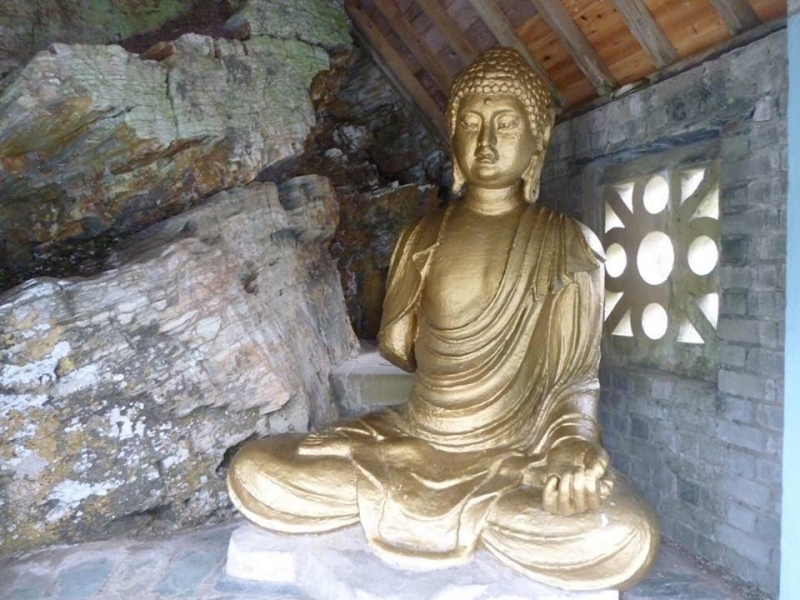
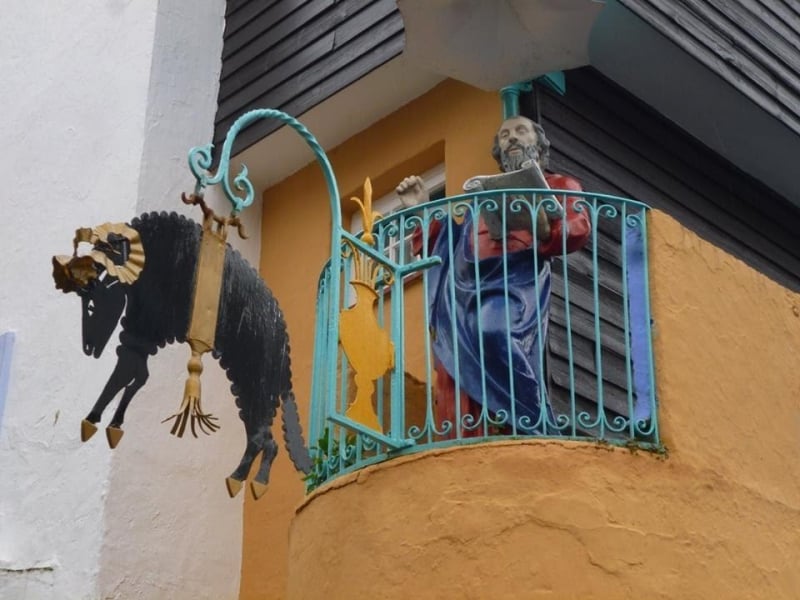
Many interesting statues, sculptures and carvings can be admired around the village, with some that are free standing and some that are mounted on the buildings. The statue of Hercules is an impressive vision and the goddess of Friga watches over the village. Faces peer down from the walls of the reconstructed building of the Bristol Colonnade. White horses stand near the beach. There are religious statues, mermaids, unusual pieces of contemporary art, and more.
Other Interesting features of Portmeirion
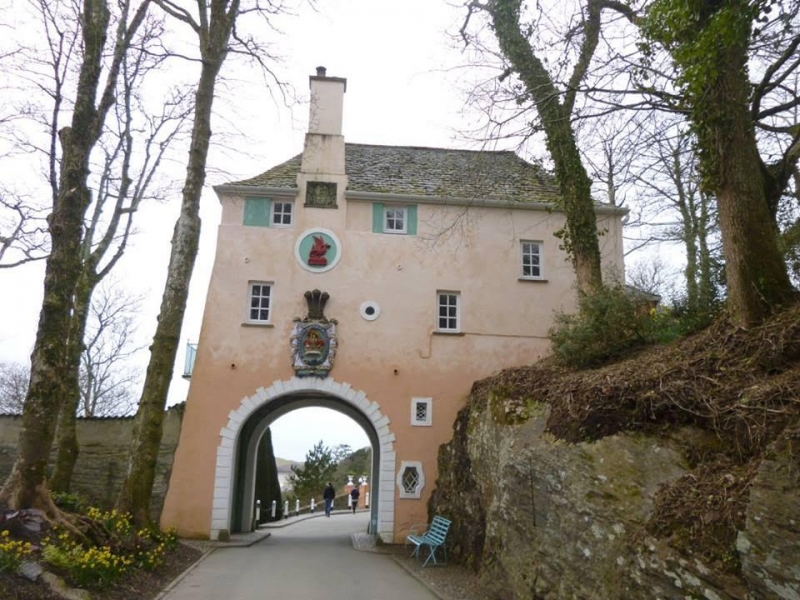
As you explore the site you’ll come across fascinating features that you didn’t expect. Walk through arches and you’ll find that some have splendid artwork covering the internal walls. Some archways actually “talk” to you too! Recordings are triggered as you pass through, telling the story of Portmeirion village. Shop signs, old and new, are often ornate—the sign for the old Welsh Wool Shop is especially photogenic. Lanterns, lamp posts, ornate railings, and fountains add to the beauty. There’s an art gallery within The Dome.
Gardens and nature at Portmeirion
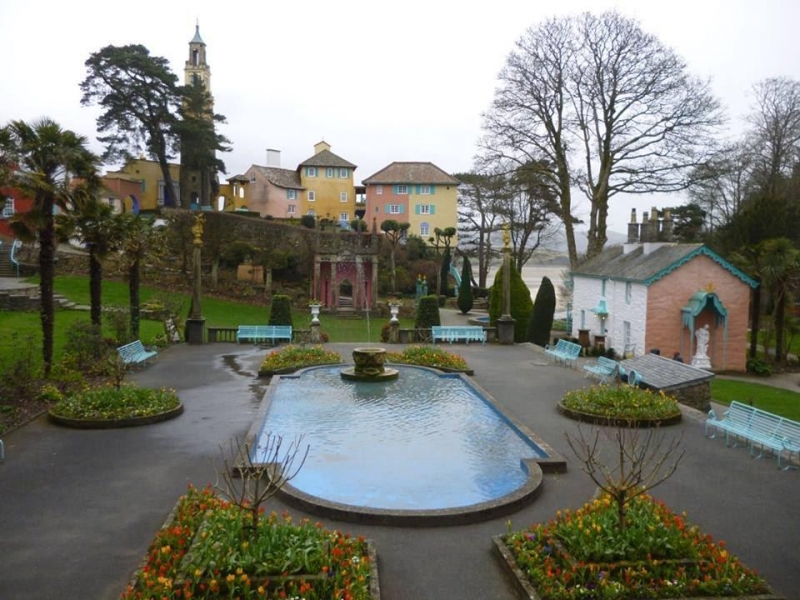
Image credit: Peta Chow
Portmeirion’s gardens are as impressive as its buildings, with formal flower beds, fish-filled ponds, water features, trees, and benches that may entice you to sit in quiet contemplation for a while. You can follow the craggy and uneven path up to the scenic Chinese Lake, visit an unusual and somewhat sad Victorian pet cemetery, make a wish at the wishing trees, see varied flora and fauna along the nature walks through the woodlands, and follow coastal paths to discover tranquil coves.
Beach Life
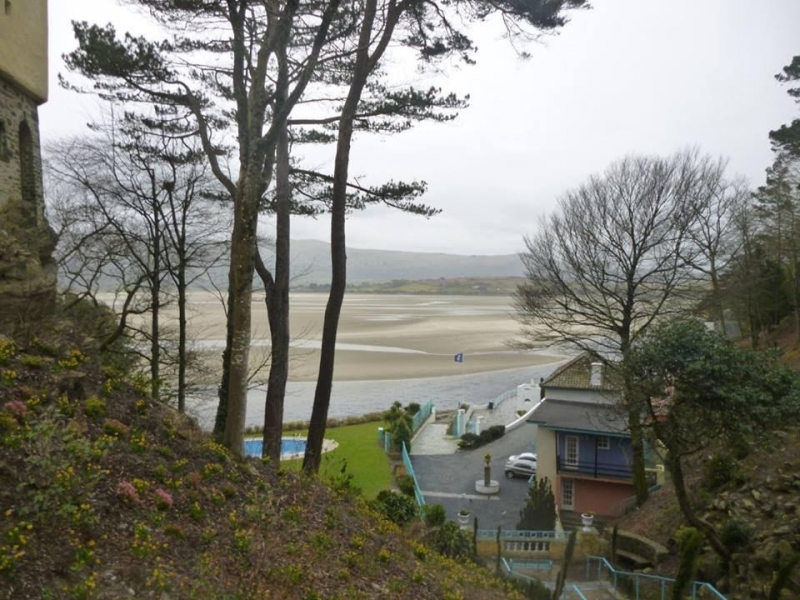
Portmeirion is sited on the cliff tops overlooking the Dwyryd River’s estuary. When the tide is low you can walk out onto the sands, sunbathe, enjoy long walks, and paddle in the shallows. The tide can come in very quickly, though, and you must leave the beach before this happens. Safety first! Members of staff will let you know the daily times of high tide; do heed their advice!
Onsite amenities
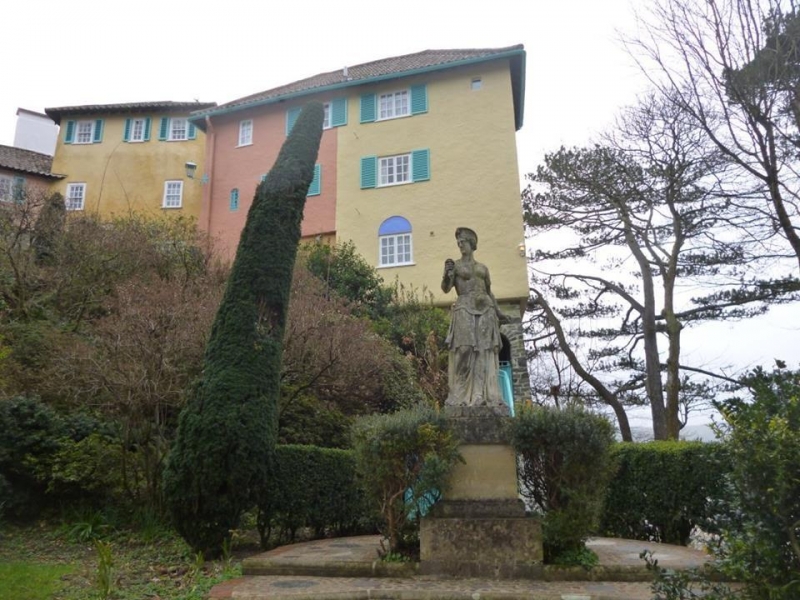
If you want to stay at Portmeirion there are many unique options. The hotel has luxury rooms and terrific facilities and there are varied rooms and suites found within other gorgeous buildings around the village. There are also villas and cottage that can sleep different numbers of people. Day trippers should respect no access signs to protect the privacy of people who are staying onsite. The varied cafes and restaurants help to keep hunger and thirst at bay and you can pamper yourself in the spa. There are diverse gift shops around the village, with the local pottery particularly sought after.
Wales is a beautiful country with many atmospheric castles, medieval churches, glorious beaches, soaring mountains, rolling agricultural land with fields separated by dry-stone walls, lakes, forests, and enchanting traditional villages. Portmeirion is another stunning feather in the cap for Wales and somewhere that you should definitely try to visit on your travels.





